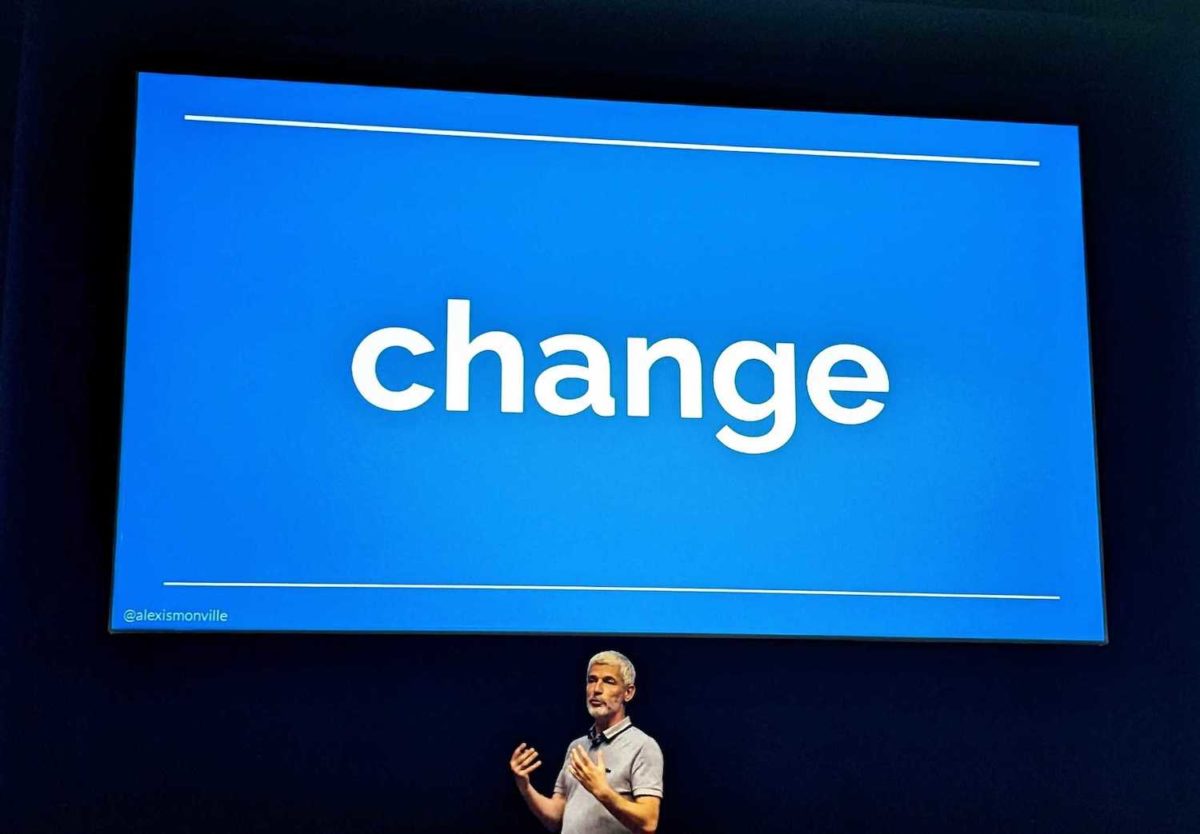I spoke at Lean Kanban France, the ancestor of Flowcon, ten years ago. A big thank you to the organizers who invited me to speak again at the celebratory edition. I first said no to avoid another travel, and then finally accepted as I was pitching for Red Hat at a public sector event in Paris the next day.
I also want to thank the Agile Tour Bordeaux organizers, who invited me to deliver a keynote address the following week.
I planned to discuss change and, more specifically, how to change on both occasions.
Can we change?
To build on the shoulder of giants, I chose to use Robert Kegan‘s model of adult development. I also used learnings from his book, Immunity to Change.

As George Box said, all models are wrong, but some are useful. Kegan’s model is helpful for two reasons.
The first one is that too many people still envision development as happening from infancy to childhood, from childhood to adolescence and that once we reach adulthood, it is all downhill.
The second one is how we go from one stage to the next. From subject to object. For example, we start being the subject of our perceptions, and then in the next stage, perceptions are objects we can reflect upon and use. We have perceptions.
At each stage of our development, we can handle more complexity. We improve our ability to make meaning of the world.
All models are wrong, but some are useful
George Box
Once we established that we could still change and develop ourselves, we discussed the question of what to change or how to support our introspections with the help of others.
What to change?
We have to seek the perspectives of those close to us, managers, peers, teammates, and life partners, to narrow down on what is the one thing to change.
We can send a 360 feedback survey to our peers and teammates to learn what we could start, stop, or continue to increase your impact.
Of course, those are only biased opinions, and we will still need to decide what to change. Check with someone close to us that our choice makes sense to them. Always surprising to realize they already knew something you were not.
What prevents us from changing?
It is not about willpower. We know what to change. We commit, and still, it seems impossible.
Robert Kegan explains that we develop a sort of immunity to change. Our immunity to change takes the form of hidden commitments that prevail on our newly made commitments.
Until we reveal those hidden commitments, change is impossible.

How to reveal the hidden commitments?
First, it is about listing all our behaviors and circumstances going against our goal. Let’s use a simple example: smoking or not smoking. A behavior could be picking a cigarette. The circumstances are critical: when I am alone and bored, I want to focus, I am relaxed, I enter or exit a place, I am with people, and so on.
Once you have the behaviors and circumstances, you can reflect on how you would feel if you were not doing those things in those circumstances. What are your fears? Or what is the advantage of not changing?
One of my former managers always added his two cents in all conversations. I tried to explain how it was demoralizing to people that he did not even listen to what they had to present before sharing his opinion or making a decision. It had close to no effect.
I tried the approach of inquiring about his fears. It fits in a sentence, but the process took quite some time. His answer: “If I am not adding value, people will think I am useless.”
By revealing that fear, it gave us the opportunity for a fantastic conversation. I was even surprised that he nearly stopped that behavior entirely after that.
How to change?
The next thing is to define tactics for all the behaviors and circumstances. As our behaviors are hardwired to triggers and events, we need to be ready with a tactic when something pops up.
With our tactics ready, we can reflect daily on what happens, by ourselves or with an accountability partner. Benjamin Franklin picked one virtue to work on at the beginning of each 4-week cycle and then moved to the next one. In doing so, he could work four weeks a year on each of the 13 virtues.
- Temperance. Eat not to dullness; drink not to elevation.
- Silence. Speak not but what may benefit others or yourself; avoid trifling conversation.
- Order. Let all your things have their places; let each part of your business have its time.
- Resolution. Resolve to perform what you ought; perform without fail what you resolve.
- Frugality. Make no expense but to do good to others or yourself; i.e., waste nothing.
- Industry. Lose no time; be always employed in something useful; cut off all unnecessary actions.
- Sincerity. Use no hurtful deceit; think innocently and justly, and, if you speak, speak accordingly.
- Justice. Wrong none by doing injuries, or omitting the benefits that are your duty.
- Moderation. Avoid extremes; forbear resenting injuries so much as you think they deserve.
- Cleanliness. Tolerate no uncleanliness in body, cloaths, or habitation. Tranquillity. Be not disturbed at trifles, or at accidents common or unavoidable.
- Chastity. Rarely use venery but for health or offspring, never to dullness, weakness, or the injury of your own or another’s peace or reputation.
- Humility. Imitate Jesus and Socrates.
At the end of each day, he would reflect on how he did and mark his progress on the chart.

I wish you great and continued development. Please support the development of people around you so that together, we tackle humanity’s critical challenges today!


Comments
2 responses to “How to change”
Great write up with solid advice and ideas to internalize!
Thank you for your support Frank!